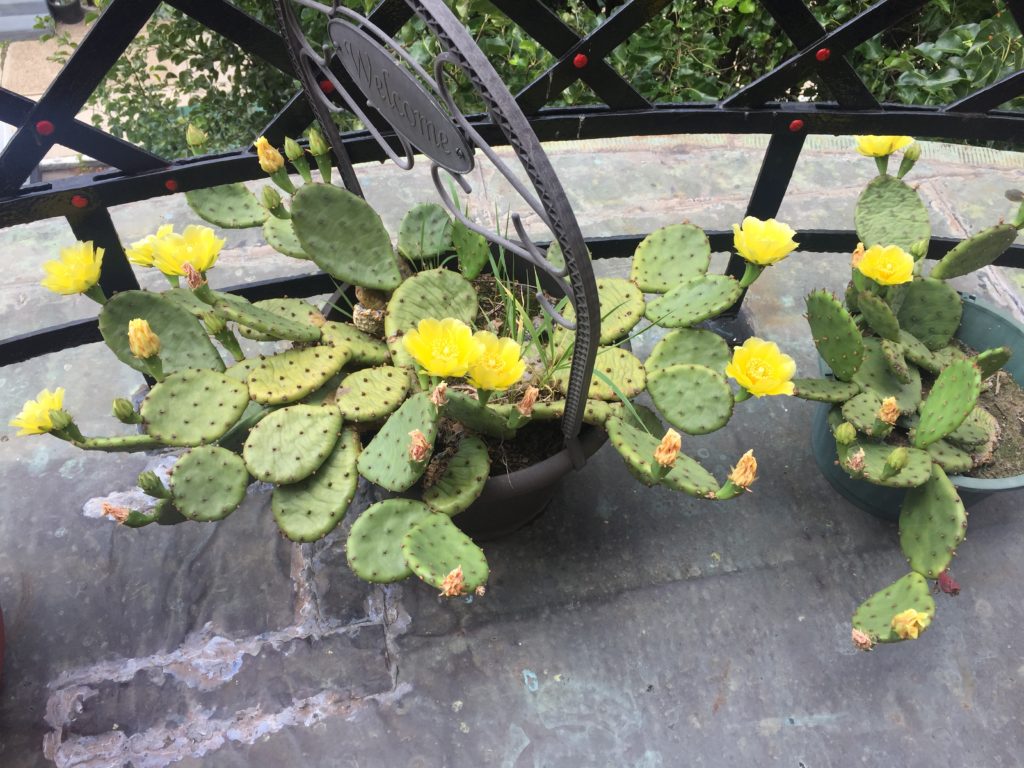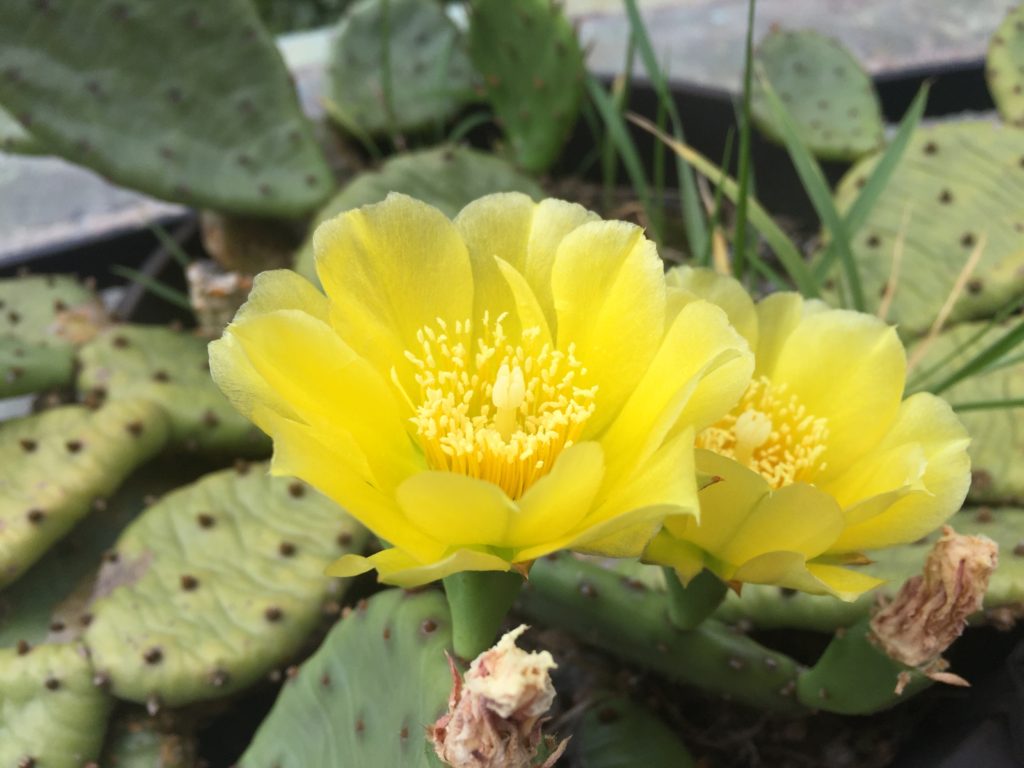This native cactus is growing on our third floor balcony in the Philadelphia house.  From time to time it will drop a segment and we will put it in a new container with some sand in a little bit of soil hopefully to mimic the way it grows along the Jersey shore .  Then a new cactus will grow. Now it is flowering  abundantly!
Having the cactus on this balcony is a strategic move. We wanted a plant that was basically zero maintenance. Â The balcony gets plenty of sun and other plants have proven to not survive without regular watering.





Here is another article you might want;
Plant community succession: Why meadows become forest.
The normal plant community in the New York City to Philadelphia region is forest. This region receives an average annual rainfall of roughly 44 inches, distributed throughout the year. This means that woody vegetation will become established in undisturbed sites, given sufficient time (including dry, sandy soils of back dunes and pine-barrens). Periodic disturbance of storms, fires or clearing is what keeps some sites open. Without human interference, fire is a very infrequent cause of disturbance in this part of the country. Unlike the western United States we rarely have dry lightning, the regular cause of fires in the west. In the northeast, according to NOAA (National Oceanographic and Atmospheric Administration), lightning is almost always accompanied by rain. With few exceptions (some pine-barrens species), our native plants are not adapted to fire. In an undisturbed forest, succession and renewal usually occur as periodic wind or ice storms cause blow-downs and otherwise open the tree canopy. Beaver meadows and back dune grasslands are probably our only naturally occurring meadow habitats.
The development of forest from open, abandoned farm fields is one of the most intensively studied ecological phenomena in the northeastern United States. This sequence is generally:
1. Annual herbs and grasses, from seeds already in the soil (ragweed, horseweed).
2. Perennial herbs, from soil seeds or from surrounding vegetation (goldenrods, asters).
3. Shrubs and trees from seeds carried by birds or wind (poplars, eastern red cedar, ash, sumac).
Fast growing “pioneer†species that need full sun are usually the first to attain full size, followed by slower growing, longer lived and more shade tolerant species (oaks, hickories, sugar maple, beech).
The first plants to become established on open soil are referred to as pioneer species. They are often annual weeds or perennials that require full sunlight. They include plants such as ragweed, horseweed, some asters, goldenrods, and exotics such as mugwort (Artemisia vulgaris). Woody pioneer species become established within another few years. These include plants that require full sunlight, grow very rapidly and are tolerant of a wide range of conditions. Some of our most common pioneer species are eastern cottonwood and other poplars, wild black cherry, and sumacs. Unfortunately many aggressive exotics fall into this category and can rapidly dominate open sites (multiflora rose, porcelainberry, oriental bittersweet, autumn or Russian olive, white mulberry, black locust and ailanthus). While the site still enjoys full sun, slower growing, shade intolerant species such as scarlet oak become established. Once tree canopy cover is established, slower growing, more shade tolerant trees and shrubs start to become established. Common shade tolerant species in this region include beech, sugar maple, and maple-leaved viburnum. There are a number of shade tolerant invasives such as Norway and sycamore maple, Japanese honeysuckle and several species of exotic bush honeysuckles that can take over woodlands and exclude native plants.
When revegetating an open site, the goal is to establish cover appropriate to the site conditions that will help exclude invasives. Plan ahead for succession. Get native plants established before the invasives take over the site. A cover of aggressive native “old field†herbs such as Canada goldenrod, rough goldenrod, dogbane and common milkweed may be effective in competing with mugwort. At the same time, establishment of many, small-sized, fast-growing native trees and shrubs, along with a scattering of slower growing species, will help develop shade quickly, while letting the slower growing species become established. As short-lived, shade intolerant species gradually die out, slower growing trees and shrubs are there to take over.
There must still be management of the site to remove invasives as native plants are becoming established. It is unfortunate that in our small, fragmented, natural areas, nature can no longer heal itself as it once was able to do.